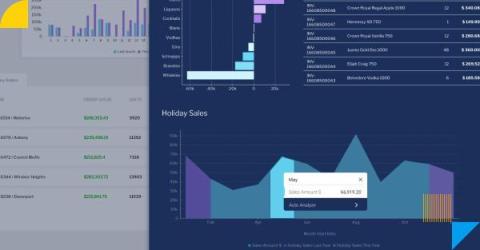What is a KPI Dashboard? 6 Key Benefits & Best Practice Examples
From business-wide objectives to long-term targets, every organization has specific metrics they need to track. One way to communicate those insights is a KPI dashboard. Key performance indicator (KPI) dashboards are a great way for executives to improve their management of strategic goals, and keep on top of changes, issues and trends in performance at a high-level, with many useful applications when used correctly, alongside other modern analytics tools.






